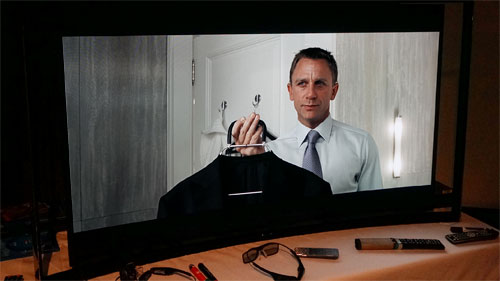Samsung has been struggling for some time to manufacture its OLED TV sets at a competitive price, but the company remains convinced its engineers will get there one day. To underline that point, the Korean electronics giant has just made an application to trademark the names of its OLED TVs, according to a report in The Korea Herald.

The paper cites sources at the Korean Intellectual Property Office as saying that Samsung has made an application in Seoul for the exclusive rights to five names; namely “Super UHD OLED”, “Ultra Super OLED”, “Samsung Super Ultra OLED”, “Ultra OLED” and “Super UHD”. The paper goes on to say the move appears to be a pre-emptive one, in order to prevent rival brands like LG Electronics from securing the trademarks first.
Market watchers will note that Samsung has struggled to match its cross-town arch-rival in the large-screen OLED market so far. The South Korean manufacturer released its first commercially available OLED TV in 2013, but that was astronomically expensive and the company has done little else in the OLED space since. Indeed, Samsung doesn’t even have a single OLED display in its 2015 television lineup, and is instead pushing its 4K ultra high-definition (UHD) LED LCD TVs based on its proprietary quantum dot technology as the way forward for now.
In contrast, LG is promoting OLED televisions as its flagship models for the year ahead, confident that manufacturing costs will decrease as its production yields rise. Last December, the firm said it was planning to ramp up OLED display panel production at its Korean plant, boosting its capacity from 8,000 to 26,000 panels per month.
As for when Samsung will finally get back into the game, that’s still anyone’s guess. The company does have an ace up its sleeve though, thanks to its investment in a revolutionary new OLED startup called Kateeva. The US-based outfit has developed an inkjet printing solution it claims can slash the costs of manufacturing OLED whilst boosting production yields, but it’s unclear when Samsung will be able to put its methods to use.
Source: The Korea Herald